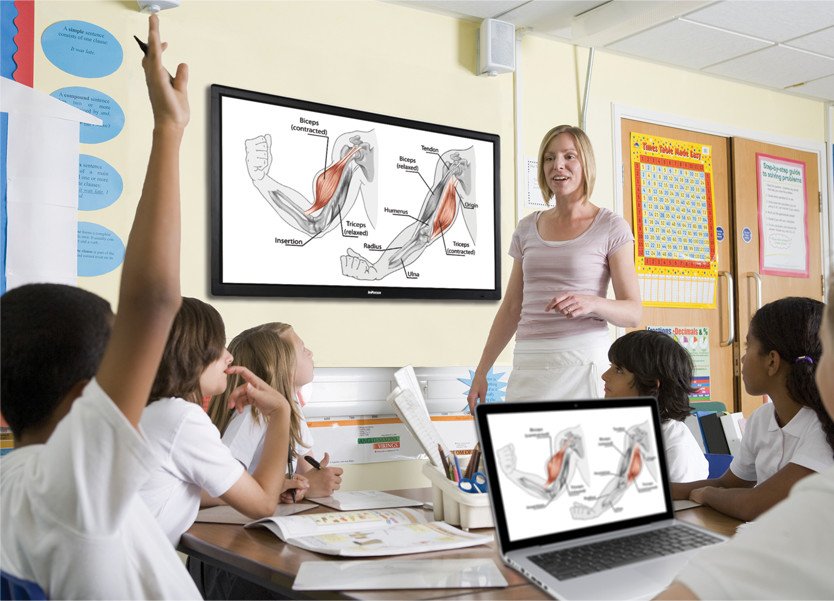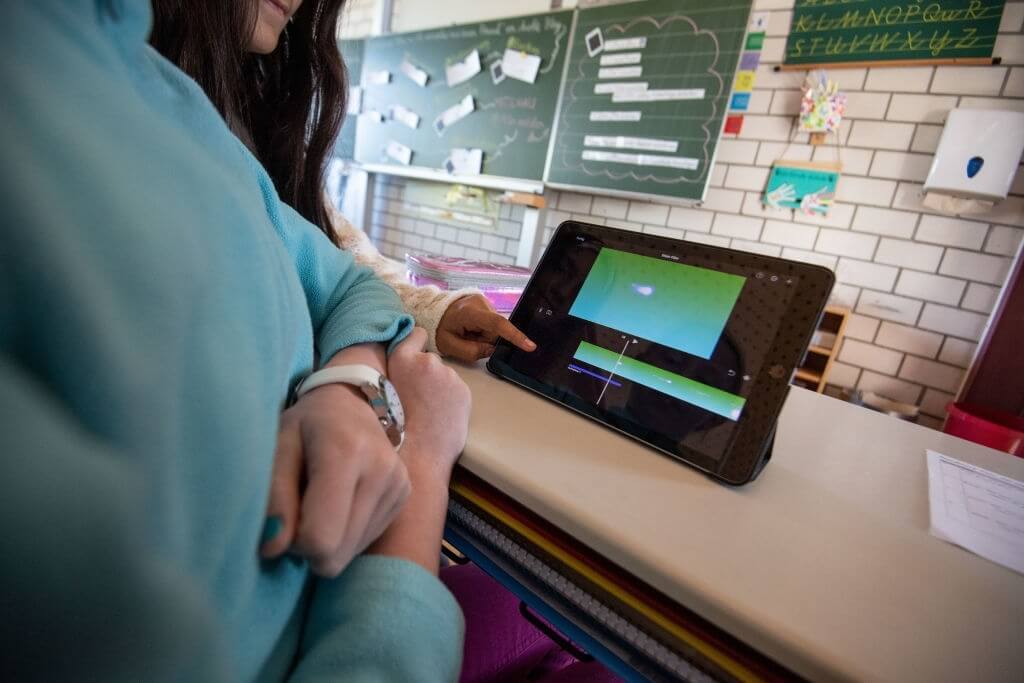8 benefits of technology in the classroom

Technology has revolutionized every industry and education is no exception. In fact, it has become an integral part of learning in the classroom. The integration of technology in the classroom has transformed teaching and learning into an interactive and engaging experience for students.
4 Benefits of Using Technology in the Classroom
Let’s explore some of the key benefits of using technology in the classroom:

1. Improved Engagement and Participation
Traditional classroom teaching methods can often fall short of capturing student attention throughout the day. However, technology has the ability to make learning more interactive and engaging. Classroom technologies such as interactive whiteboards, videos, and educational apps can help students visualize complex concepts and better understand them.
Furthermore, teaching with technology can encourage student participation and active engagement. Interactive classroom technologies allow students to collaborate with their classmates, share ideas and take part in discussions. This is a stark contrast to the traditional classroom, where students often feel intimidated and reluctant to participate in discussions.
2. Personalized Learning Experiences
Thanks to technology, it is now easier than ever to create personalized learning experiences for students. Classroom technologies such as learning management systems (LMS), virtual classrooms and online courses allow students to learn at their own pace and in their preferred style. This personalized learning approach enables students to build on their strengths and weaknesses and learn in a way that suits them best.
Moreover, with personalized learning experiences, students can access a wealth of learning resources, allowing them to revisit key concepts when they need to. This not only promotes better learning outcomes but also helps students become more independent and self-motivated learners.
3. Improved Access to Educational Materials
Before technology, access to educational materials was restricted to what was available in the classroom and library. However, technology has significantly expanded access to educational materials, empowering students to learn beyond the walls of the classroom.
Online educational resources, such as e-books, educational videos, and podcasts, provide students with a wealth of learning materials. This means that students can learn and conduct research outside of the classroom and share findings with their classmates. This type of resource-sharing not only promotes collaboration but also expands the learning outcomes of students.
4. Increased Efficiency and Productivity
Integrating technology into the classroom can result in a more efficient and productive learning environment. Classroom technologies like shared calendars, group messaging, and online submission of assignments can simplify tasks for teachers and students. This not only saves time but also reduces the risk of error associated with manually completing tasks.
Furthermore, technology can help teachers automate grading and assessments, allowing them to provide students with prompt feedback. This prompt feedback helps students identify areas they need to improve on and promotes continuous learning and development.
How Technology Can Benefit Learning in Classrooms?
Technology can benefit learning in the classroom in many ways. Here are some of the key ways that technology can benefit learning in classrooms:

1. Enhances Learning Experiences
Technology provides a multitude of resources and tools for learning that were not available before. Videos, educational gaming, podcasts, and interactive whiteboards can make learning a more interactive, engaging, and personalized experience.
Moreover, online resources like e-books, blogs, and articles can provide students with diverse perspectives on a particular topic, which can enrich their understanding of the subject. Technology also enables students to create projects online and collaborate with their peers remotely, providing them with opportunities to develop critical thinking, problem-solving, and communication skills.
2. Addresses Diverse Learning Styles
Not all students learn in the same way, and technology can help address this issue. Technology provides a range of media that cater to students’ individual learning styles. For instance, some students may be visual learners, and educational videos and infographics can be very helpful for them. On the other hand, some students may learn best through hands-on activities, and educational games, simulations, and experiments can be beneficial for them.
When learning materials are presented in various formats, students can choose the medium that best suits them, facilitating a more personalized and effective learning experience.
3. Streamlines Administration and Management
Technology can also benefit the administrative and management functions within schools. Software solutions like student information systems, learning management systems, and assessment tools can help streamline and automate tasks such as grading, attendance tracking, progress monitoring, and record keeping.
Moreover, technology can help connect the school management, students, and parents through online portals or mobile applications, making communication more efficient and effective.
13 Benefits of Using Technology in the Classroom
Technology is an essential component of 21st-century learning, and educators who integrate technology into their classrooms can offer students a wide range of benefits. Here are some of the key benefits of using technology in the classroom:

1. Technology Enhances Learning
Technology provides various learning resources and tools that allow students to learn at their own pace and in their preferred style. From quality online courses and live-streamed lectures to interactive whiteboards and educational apps, technology has made learning a more interactive and engaging experience.
2. Technology Helps Students Retain Information
Studies have shown that students who use technology for learning can retain more information than those who don’t. When students see connected images, videos or simulations, it helps them to remember the concepts better, as they become more engaging and memorable.
3. Technology Takes Learning Beyond the Classroom
The internet has made it easier than ever for students to access a wealth of learning materials from all over the world. Online resources like e-books, videos, podcasts, and blogs allow students to learn at their own pace and in their preferred style, even outside the classroom.
4. Technology Encourages Collaboration
Technology enables students to work collaboratively on projects and assignments regardless of their geographic locations. Technology such as video conferencing and online discussion forums allow students to share their thoughts and ideas, providing them with real-world collaborative opportunities.
5. Technology Increases Student Engagement
Online educational resources, such as educational games, simulations, and videos, can make learning more engaging and fun for students. This helps students stay engaged and motivated throughout the learning process.
6. Technology Makes Learning More Accessible
Technology has made learning easier and more accessible for students with disabilities. For instance, applications like text-to-speech software or Braille displays can help students with visual impairments gain access to learning materials. This makes learning possible for more students and fosters an inclusive learning environment.
7. Technology Improves Assessment and Evaluation
Technology has made the assessment process more accurate and efficient. Computerized tests can grade student responses quickly, freeing up teachers to focus on other aspects of teaching. Additionally, digital portfolios and data management systems can help students and teachers keep track of their progress and identify areas for improvement.
8. Technology Improves Teacher Efficiency
Technology can help teachers automate tasks such as grading and record keeping, freeing them up to focus on what they do best: teaching. Additionally, online software like Google Drive and Dropbox can help teachers collaborate with their colleagues and share resources, making their work more efficient and productive.
9. Technology Increases Student Creativity
Technology enables students to create projects that would have been impossible before. For instance, students can create digital content like videos, podcasts, and animations, which helps them to develop their creativity and technical skills.
10. Technology Prepares Students for the Future
Technology is an integral part of the modern workplace, and students who are technology-savvy will be better prepared to succeed in the future. Integrating technology into the classroom helps students develop the skills they will need to thrive in the 21st Century workforce.
11. Technology Provides Instant Feedback to Students
Technology can provide instant feedback to students, which helps them to understand their mistakes and improve their learning outcomes. Applications like Perfect Practice can help students learn math by identifying and correcting mistakes instantly.
12. Technology Provides a More Diverse Learning Experience
With technology, the learning experience is more diversified. Students can access learning materials from a variety of sources, and this expands their learning outcomes. Additionally, technological tools and resources can provide students with alternative and creative ways to learn a particular concept.
13. Technology Fosters Independence and Self-Directed Learning
Technology enables students to learn at their own pace and in their preferred style, promoting independence and self-directed learning. Students can take responsibility for their own education and choose the resources that best suit their learning style.
Conclusion
As we have seen, technology can provide many benefits for learning in the classroom. Technology can improve engagement, promote personalized learning experiences, and provide access to a wealth of learning materials. Integrating technology into the classroom also helps students develop the skills they will need to succeed in the 21st-century workforce.
While technology has its challenges and drawbacks, its benefits far outweigh its limitations. By integrating technology into the classroom, educators and students can tap into its potential to create a more engaging, effective, and accessible learning environment.

Source image : f450c.org

Source image : absbuzz.com

Source image : www.goguardian.com






